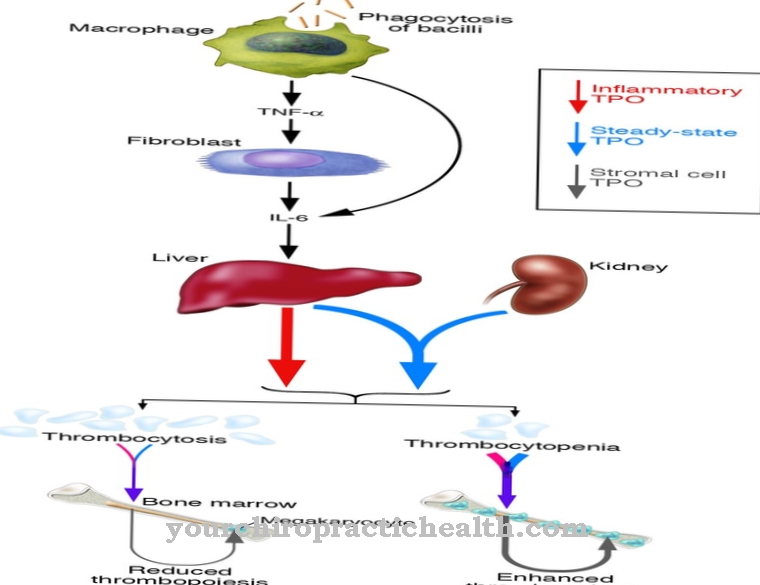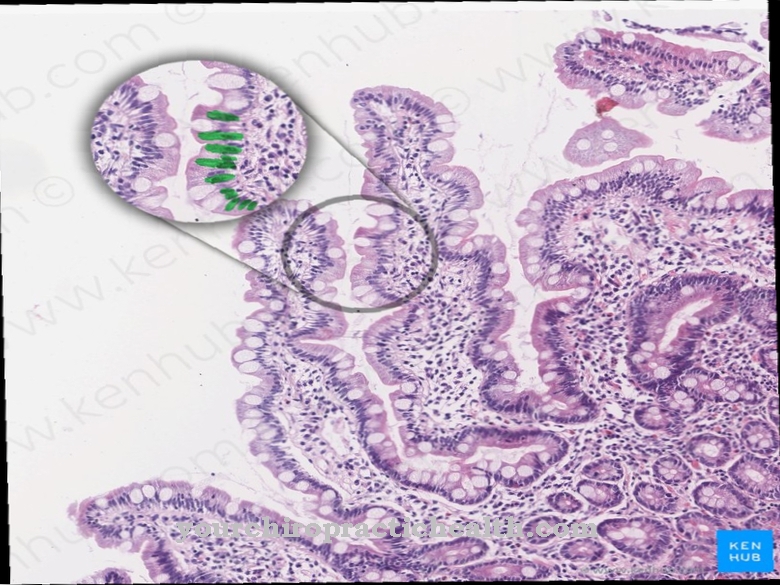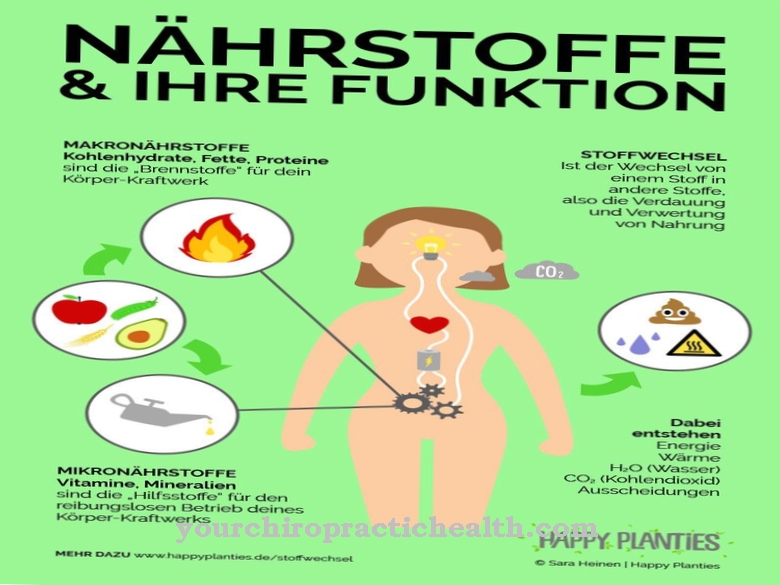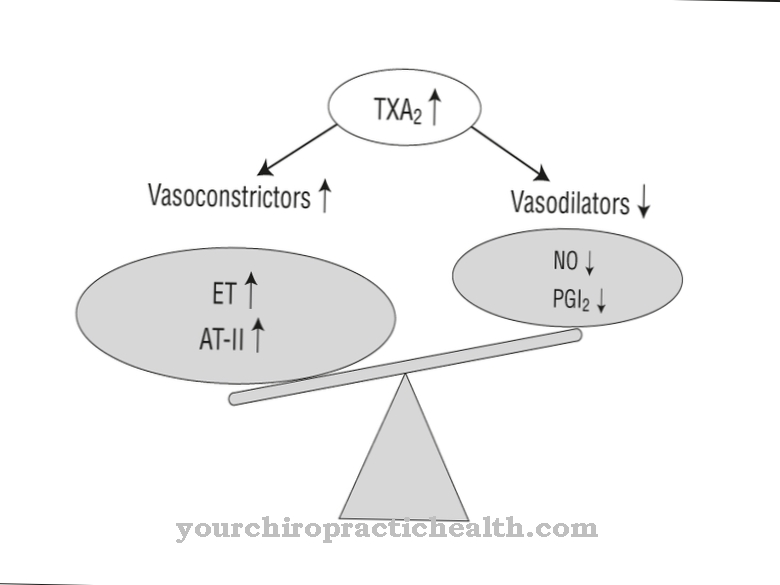At Serine it is an amino acid that is one of the twenty natural amino acids and is not essential. The D-form of serine acts as a co-agonist in neuronal signaling and may play a role in various mental illnesses.
What is serine
Serine is an amino acid with the structural formula H2C (OH) -CH (NH2) -COOH. It occurs in the L-form and is one of the non-essential amino acids, as the human body can produce it itself. Serine owes its name to the Latin word "sericum", which means "silk".
Silk can serve as a raw material for serine by technically processing the silk glue sericin. Like all amino acids, serine has a characteristic structure. The carboxyl group consists of the atomic sequence carbon, oxygen, oxygen, hydrogen (COOH); the carboxyl group reacts acidic when an H + ion is split off. The second group of atoms is the amino group. It is composed of one nitrogen atom and two hydrogen atoms (NH2).
In contrast to the carboxyl group, the amino group has a basic reaction in that it attaches a proton to the lone pair of electrons on the nitrogen. Both the carboxyl group and the amino group are the same for all amino acids. The third group of atoms is the side chain, to which the amino acids owe their various properties.
Function, effect & tasks
Serine has two important functions for the human body. As an amino acid, serine is a building block for proteins. Proteins are macromolecules and form enzymes and hormones as well as basic substances such as actin and myosin that make up muscles.
The immune system's antibodies and hemoglobin, the red blood pigment, are also proteins. In addition to serine, there are nineteen other amino acids that occur in natural proteins. The specific arrangement of the amino acids creates long protein chains. Due to their physical properties, these chains fold and form a spatial, three-dimensional structure. The genetic code determines the order of the amino acids within such a chain.
In most human cells, serine is in its L-form. In contrast, D-serine is produced in the cells of the nervous system - the neurons and glial cells. In this variant, serine acts as a co-agonist: it binds to the receptors of nerve cells and thereby triggers a signal in the neuron that it transmits as an electrical impulse to its axon and forwards to the next nerve cell. In this way, the information transfer takes place within the nervous system.
However, a messenger substance cannot bind to every receptor at will: According to the lock and key principle, neurotransmitters and receptors must have properties that match each other. D-serine occurs, among other things, as a co-agonist at the NMDA receptors. Although serine is not the main messenger substance there, it has a reinforcing effect on signal transmission.
Education, occurrence, properties & optimal values
Serine is essential for the body to function. The human cells form serine by oxidizing and aminating 3-phosphoglycerate, that is, by adding an amino group. Serine is one of the neutral amino acids: its amino group has a balanced pH value and is therefore neither acid nor basic. In addition, serine is a polar amino acid.
Since it is one of the building blocks of all human proteins, it is very common. The L-series is the natural variant of serine and occurs primarily at a neutral pH of around seven. This pH value prevails inside the human body cells, in which serine is processed. L-serine is a zwitterion. A zwitterion is created when the carboxyl group and the amino group react with one another: the proton of the carboxyl group migrates to the amino group and there attaches itself to the lone pair of electrons.
As a result, the zwitterion has both a positive and a negative charge and is uncharged as a whole. The body often breaks down serine to glycine, which is also an amino acid that, like serine, is neutral but non-polar. Serine can also produce pyruvate, which is also known as acetylformic acid or pyruvic acid. It is a keto carboxylic acid.
Diseases & Disorders
In its L-form, serine occurs in neurons and glial cells and there probably plays a role in various mental illnesses. L-serine binds as a co-agonist to N-methyl-D-aspartate receptors, or NMDA receptors for short. It strengthens the effect of the neurotransmitter glutamate, which binds to the NMDA receptors and thereby activates the nerve cells.
Learning and memory processes depend on the NMDA receptors; it indicates the remodeling of synaptic connections and thereby changes the structure of the nervous system. This plasticity is expressed as learning at the macro level. Science considers this connection relevant to mental illness. Mental illnesses lead to numerous functional impairments, which often also include memory problems. Faulty learning processes can also contribute to the development of mental illness. An example of this is depression. Depression leads to poor cognitive performance, especially when it is very severe. However, learning and memory performance improve again when the depression subsides.
A current theory assumes that the frequent activation of certain nerve pathways increases the likelihood that these pathways will be activated more quickly in the event of future stimuli: the stimulus threshold drops. This consideration is based on a deblocking of the receptors, which could explain the process. In the case of mental illnesses such as depression or schizophrenia, there may be a disruption in this process, which can explain at least part of the respective symptoms. In this context, initial studies confirm the effect of D-serine as an antidepressant.













.jpg)

.jpg)
.jpg)











.jpg)